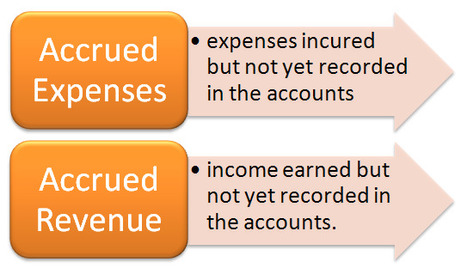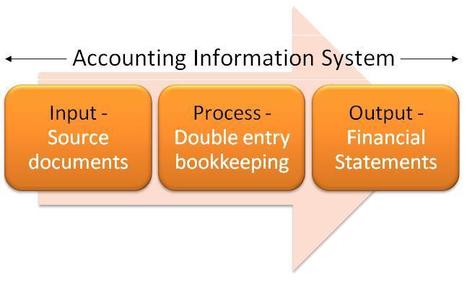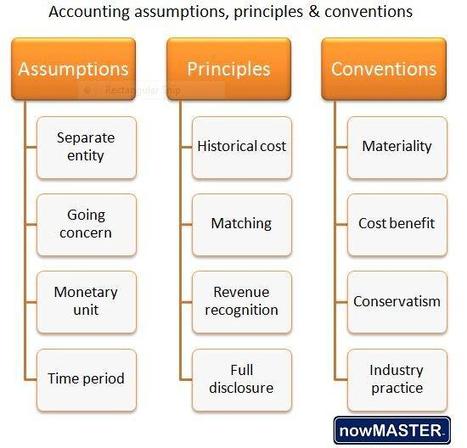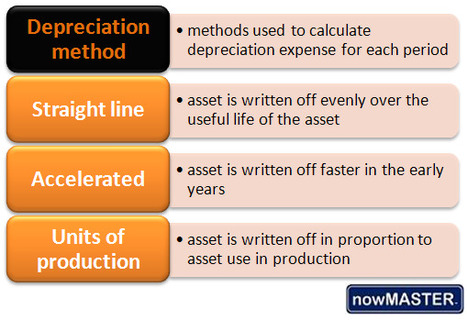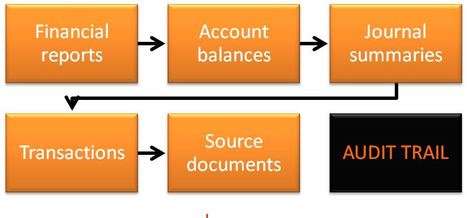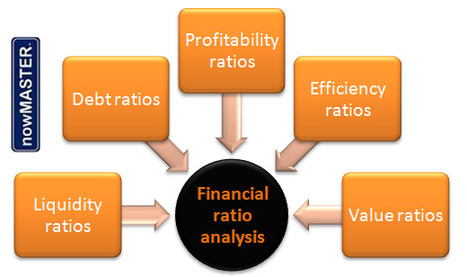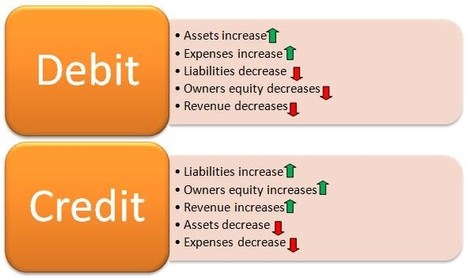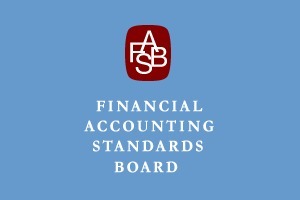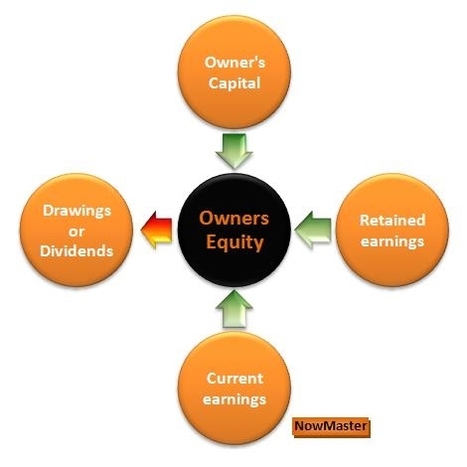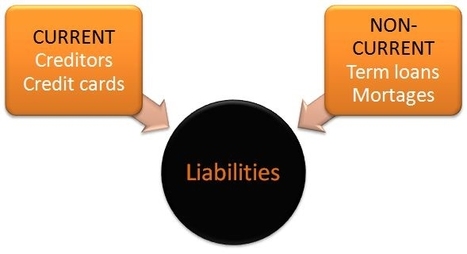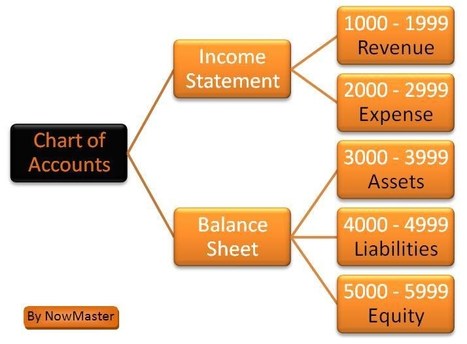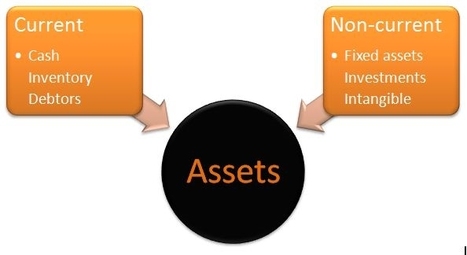 Your new post is loading...
 Your new post is loading...

|
Scooped by
Peter John Baskerville
August 27, 2011 7:56 PM
|
Subsidiary ledgers in accounting involve the grouping of individual accounts that share a common element. Individual accounts that share a common element include suppliers, customers, inventory items and fixed assets. These individual accounts collectively add up to the value of the corresponding control account reported as a total in the general ledger. For example the accounts payable is the control account for the subsidiary ledger of suppliers and known as the creditors ledger. The accounts receivable is the control account for the subsidiary ledger of customers and known as the debtors ledger.

|
Scooped by
Peter John Baskerville
August 23, 2011 11:05 AM
|
Revenue is the gross sales or cash receipts received by a business from its customers in the ordinary course of business that involves selling goods or providing services. Also known as turnover, sales, fees earned. Revenue is the first line detailed on an Income Statement. Income is the increase in economic benefit available to the business owners from the net result of the revenues less the expenses incurred in earning that revenue for a previous period. Also known as net profit or earnings. Income is the last line detailed on an Income Statement which is why it is also called the "bottom line".

|
Scooped by
Peter John Baskerville
August 18, 2011 9:38 AM
|
Posting in accounting refers to the process of transferring to the ledgers, the details of financial transactions originally recorded in the journals of a business. Posting is an important step in the double-entry bookkeeping system. Posting transfers the debit and credit aspects of a financial transaction recorded chronologically in the journals to the relevant accounts that are impacted by that transaction in the ledger. Postings take place between the general journal and the general ledger as well as the subsidiary journals to both the subsidiary and the general ledgers.

|
Scooped by
Peter John Baskerville
August 16, 2011 8:56 PM
|
Federal concepts for measuring assets and liabilities issued today.

|
Scooped by
Peter John Baskerville
August 13, 2011 11:58 AM
|
Accruals in accounting are special journal entries that are made by accountants and bookkeepers at the end of each accounting period and prior to the preparation and distribution of the financial statements. Accruals are the practical application of the matching period where income and expenses must be recorded in the accounting period where they are respectively earned and incurred. Accrual entries involve bringing to account revenue that has been earned but not yet invoiced and expenses that has been incurred but not yet billed.

|
Scooped by
Peter John Baskerville
August 11, 2011 6:27 AM
|
The terms 'cost' and 'expense' are commonly used words in the fields of business, economics and accounting. Most often these terms can be used interchangeably without issue. In accounting however, the terms have quite different meanings. Basically, sacrificing resources (money) to acquire products is called a cost. Using up the value of those products to generate revenue for a business is called an expense.

|
Scooped by
Peter John Baskerville
August 10, 2011 6:06 AM
|
One of the steps included in the accounting cycle is the preparation of the principal financial statements. They are the Income Statement and the Balance Sheet. These financial statements are a means by which the information accumulated and processed in financial accounting is periodically communicated to the users. Once the worksheet is completed, it is easy to prepare the financial statements as the necessary data have already been summarized. A third financial statement, which is the Statement of Cash Flows, provides information about cash receipts and cash payments into operating, investing, and financing activities.

|
Scooped by
Peter John Baskerville
August 3, 2011 6:31 AM
|
Choose a topic from the list below to browse all JofA articles, video and audio from January 1997 through the current issue on the selected topic. To perform a search of the entire online archive, enter a keyword in the search box at the top of the page.

|
Scooped by
Peter John Baskerville
July 30, 2011 11:01 AM
|
Invoice Discounting is a funding option provided to businesses by finance companies. Under Invoice Discounting funding, the business uses its unpaid customer invoices as collateral to access immediate cash funds that improves the working capital and cash flow position of the business.

|
Scooped by
Peter John Baskerville
July 21, 2011 12:41 PM
|
The accounting equation is the base of all types of book-keeping transactions and records. You have to understand the equation to understand how a financial transaction is affecting the financial position of the business.

|
Scooped by
Peter John Baskerville
July 20, 2011 12:21 PM
|
Like any area of activity, business loans and finance raising have its own jargon and this series of articles are intended to give brief plain English explanations for some of the common terms used from 'accounting ...

|
Scooped by
Peter John Baskerville
July 18, 2011 5:30 PM
|
The Accountancy profession is governed by a strict code of ethics, as laid down by various bodies such as the AAT, CIMA and the ACCA. Having this Code of et (Need to learn about accountancy ethics fast?

|
Scooped by
Peter John Baskerville
July 18, 2011 9:57 AM
|
Broad basic assumptions under which financial statements are prepared and these are used by the entire profession in preparing financial accounting information.
|

|
Scooped by
Peter John Baskerville
August 26, 2011 7:42 PM
|
A 10-column worksheet is a columnar template that helps accountants and bookkeepers plan and facilitate the end-of-period reporting process. It is not a mandatory step in the accounting process but is often completed to help eliminate errors associated with the end-of-period adjustments. The 10-column worksheet conveniently ensures that all of the details related to the end-of-period accounting and statement preparation have been properly accounted for at the end of each each fiscal period.

|
Scooped by
Peter John Baskerville
August 20, 2011 11:52 AM
|
Depreciation in accounting is a process that proportionately expenses the cost of a fixed asset over the asset's useful economic life. In time, fixed assets will eventually lose all their economic value due to a combination of aging, wear and tear, deterioration and/or obsolescence. Depreciation expense ensures that this decline in the value of the fixed assets is matched in the accounting system against the income generated over the same period of the fixed asset’s useful life. Depreciation then is the necessary fulfilment of the matching principle in accounting. While depreciation expense is a bookkeeping entry that does not involve any cash outlay, it is, under certain conditions, an allowable and legitimate tax deduction as a cost of doing business.

|
Scooped by
Peter John Baskerville
August 17, 2011 12:32 AM
|
An audit trail is a process pathway built into a well designed accounting system that allows amounts reported in the financial statements to be traced back to their original source. An audit trail consists of a chronological sequence of records and source documents that provides the evidence required by an auditor to reconstruct previous steps in the accounting system. An audit trail facilitates defect analysis and so helps verify the accuracy and reliability of financial reports.

|
Scooped by
Peter John Baskerville
August 15, 2011 12:38 PM
|
Answer: Most analysis of publicly traded companies is done via the computation of financial ratios. That is, calculating the relationship between two sets of financial numbers reported by the company in their financial statements.

|
Scooped by
Peter John Baskerville
August 13, 2011 4:19 AM
|
End-of-period-adjustments in accounting are journal entries made to the accounts of a business prior to the preparation and distribution of the financial statements for a given accounting period. End-of-period adjustments ensure that the these financial statements reflect the true financial position and performance of a business by allocating to the appropriate period the income earned and expenses incurred. End-of-period adjustments are also known as year-end-adjustments, adjusting-journal-entries and balance-day-adjustments. End-of-period-adjustments apply the matching principle of accounting which include accruals, deferrals and asset value adjustments.

|
Scooped by
Peter John Baskerville
August 10, 2011 6:13 AM
|
'Revenue' is treated as a credit in accounting because it is actually a sub-category of equity and equity accounts in accounting are credited when they increase.

|
Scooped by
Peter John Baskerville
August 5, 2011 7:26 AM
|
Revenues or revenue in business is the gross income received by an entity from its normal business activities before any expenses have been deducted. Income may be received as cash or cash equivalent and is typically generated from the sale of goods or the rendering of services for a particular period of time.

|
Scooped by
Peter John Baskerville
August 2, 2011 9:15 AM
|
The Financial Accounting Standard Board issued seven Statements of Financial Accounting Concepts (SFAC). These are statements of concepts issued to explain further the theory behind the development of every Statements of Financial Accounting Standards. The seven statements are as follow:

|
Scooped by
Peter John Baskerville
July 29, 2011 6:08 PM
|
This answer will help you understand definition of 'owners equity' and the way 'owners equity' is classified in Accounting. 'Owners equity' is one of the three elements in the accounting equation; the other two are 'assets' and 'liabilities'.

|
Scooped by
Peter John Baskerville
July 20, 2011 12:24 PM
|
Liabilities are the financial obligations and debts of an entity arising from past transactions and occurring during the course of business operations. These financial obligations are paid by the accounting entity to external parties over time via the transfer of economic benefits including money, goods or services. External parties include banks, other financial institutions, creditors and government agencies. Liabilities include credit card debt, overdrafts, accounts payable, term loans and mortgages.

|
Scooped by
Peter John Baskerville
July 19, 2011 9:41 AM
|
The Chart of Accounts is a structured list of all the accounts in the general ledger. These accounts are created by businesses to record the details of their financial transactions in the accounting information system. The Chart of Accounts groups and indexes the accounts by name and identifying codes according to the structure of the financial reports (i.e. assets, liabilities and Owners Equity for the Balance sheet and revenue and expenses for the Income Statement). A Chart of Accounts with their structured identifying codes provides accounting staff with an efficient and effective tool when processing financial data in a computerized accounting programs.

|
Scooped by
Peter John Baskerville
July 18, 2011 10:03 AM
|
"An asset is a resource controlled by the enterprise as a result of past events and from which future economic benefits are expected to flow to the enterprise."
|
 Your new post is loading...
Your new post is loading...
 Your new post is loading...
Your new post is loading...









